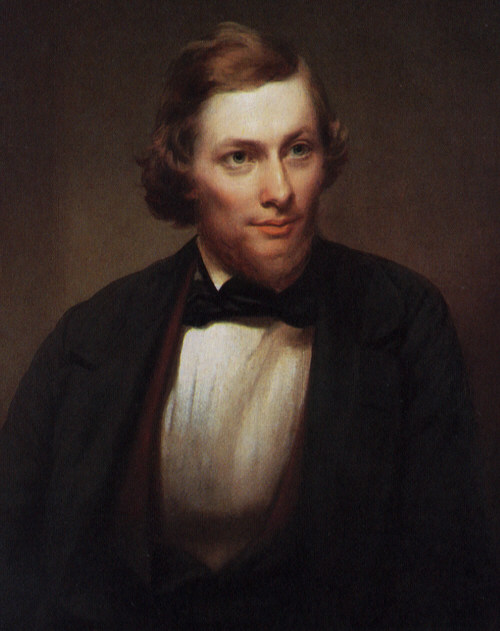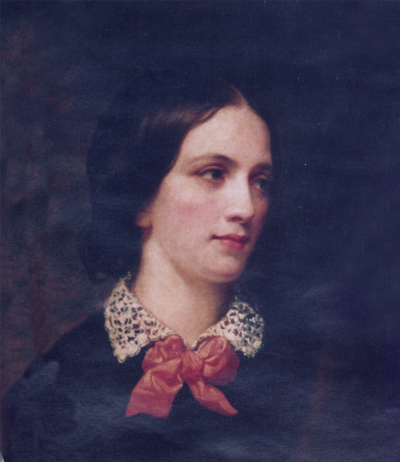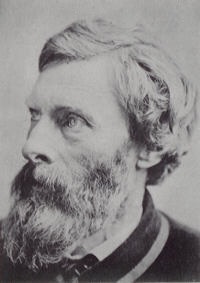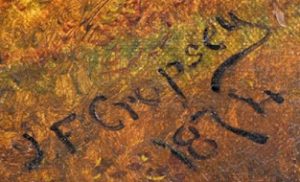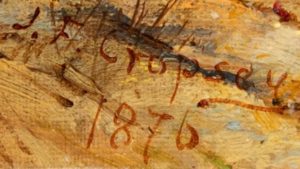Born on a small farm in Rossville, Staten Island in 1823, Jasper Cropsey, known as “Frank” to friends and family, was a prodigy in the ways of visual arts. Drawing pictures and building models from handmade tools, Frank became a local celebrity at the age of 13 when the model house he built won first prize at the Mechanic’s Institute Fair of 1837. He was then known locally as the “boy that built the house.”
By 14 years of age, Frank was an apprentice architect for Joseph Trench’s firm in Manhattan. While working there, he discovered oil painting and as a teen would go to the National Academy of Design to view the paintings of his idol, Thomas Cole. At 19, he began to experiment in oil painting, teaching himself after hours in Mr. Trench’s office. Soon he had developed to the point that he was exhibited at the National Academy, where his early paintings hung along side those of Cole, Asher B. Durand, and other early Hudson River School artists. At 21 he was the youngest Associate Member ever elected to the National Academy, and soon left architecture behind (for a while) to concentrate on becoming a full-time landscape painter.
Cropsey met Maria Cooley at her home in West Milford, NJ, located on Greenwood Lake, an area that he would paint views of many times in his career. They married in 1846 and in 1847 sailed for Europe, traveling in England, Scotland, Switzerland, and France, but spending the bulk of their time abroad in Italy, where the Cropseys rented an apartment and studio in Rome. For the rest of his career, Cropsey would create oil paintings of Italian scenes based on the many sketches and studies he did in the two year period spent in Rome.
Returning to America in 1849, Cropsey’s career blossomed and he was soon regarded as one of the leading lights of the Hudson River School in the 1850s, along with Frederic Church, John Kensett, Asher Durand, and others. In 1856, the Cropseys returned to Europe, this time living in London and traveling throughout England. His time in England was marked by the completion of Autumn-On the Hudson River, his seminal landscape painting now in the National Gallery of Art in Washington, DC, as well as he and Maria being presented to Queen Victoria at St. James Palace in 1861.
Back in America in 1863, Cropsey’s career continued to flourish and the 1860s proved to be his most successful decade in terms of painting sales and income. By the end of the 1860s, however, the Hudson River School began to lose its popularity and by the early 1870s would be completely out of favor in the art world. 1876 marked Cropsey’s last major successful painting, The Old Mill, now in the Chrysler Museum of Art in Norfolk, VA. In the early 1880s the Cropseys were dangerously close to having their home, Aladdin, in Warwick, NY foreclosed upon as poor painting sales greatly impacted their finances. They managed to sell their palatial estate and auctioned off many paintings, furniture, and household possessions in preparation to move to a smaller house.
In 1885 the Cropseys moved to Hastings on Hudson, first renting a home, then later purchasing the house at 49 Washington Avenue, which Cropsey named “Ever Rest.” Jasper and Maria lived the rest of their lives at Ever Rest, living quietly and not traveling much, if at all. Cropsey’s paintings done in this time were either local views or views based on the hundreds of sketches he had completed through the years. Jasper died at Ever Rest in 1900 at the age of 77, and Maria, his wife of 54 years, passed away in 1906.
Signatures
- 1874
- 1876
Reference
Newington-Cropsey Foundation
